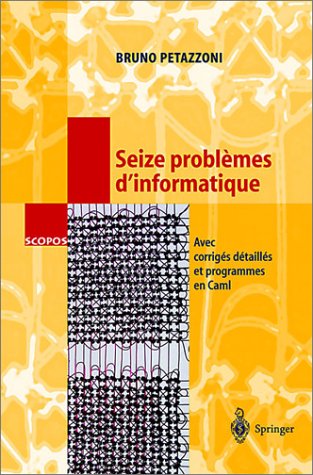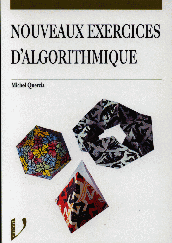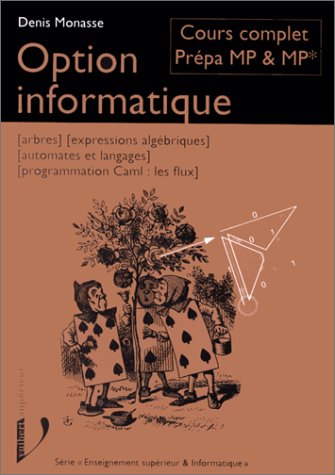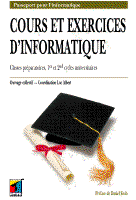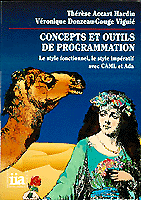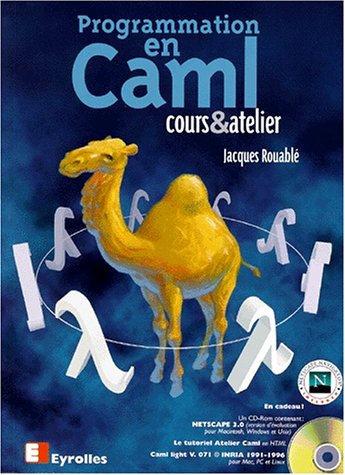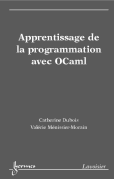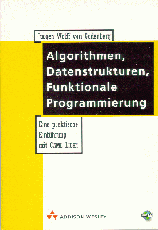Books in English
| [3] | Emmanuel Chailloux, Pascal Manoury, and Bruno Pagano.
Developing Applications With Objective Caml.
English translation of
“Développement d'applications avec Objective Caml”. [ Online version ]
A comprehensive (742 pages) book on OCaml, covering
not only the core language, but also modules, objects and
classes, threads and systems programming, and
interoperability with C.
|
| [4] | Guy Cousineau and Michel Mauny.
The Functional Approach to Programming. Cambridge University Press, Cambridge, 1998, ISBN
0-521-57183-9 (hardcover) or
0-521-57681-4 (paperback).
This book uses Caml as a tool to introduce several important
programming concepts. It is divided in three parts. The
first part is an introduction to Caml, which presents the
language itself, but also introduces evaluation by rewriting,
evaluation strategies and proofs of programs by induction. The
second part is dedicated to the description of application
programs which belong to various fields and might interest
various types of readers or students. Finally, the third
part is dedicated to implementation. It describes
interpretation and compilation, with brief descriptions of
memory management and type synthesis.
| 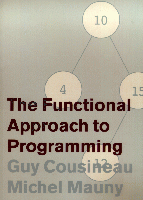 |
| [5] | Jon D. Harrop.
OCaml for Scientists. Flying Frog Consultancy Ltd, 2005.
This book teaches OCaml programming with special
emphasis on scientific applications. Many examples are given,
covering everything from simple numerical analysis to
sophisticated real-time 3D visualisation using OpenGL.
This book contains over 800 color syntax-highlighted source
code examples and dozens of diagrams that elucidate the
power of functional programming to explain how
lightning-fast and yet remarkably-simple programs can be
constructed in the OCaml programming language.
| 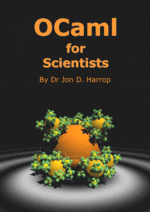 |
Books in French
Caml programming
| [6] | Emmanuel Chailloux, Pascal Manoury, and Bruno Pagano.
Développement d'applications avec Objective Caml. Éditions O'Reilly, Paris, 2000, ISBN 2-84177-121-0.
A comprehensive (742 pages) book on OCaml, covering
not only the core language, but also modules, objects and
classes, threads and systems programming, and
interoperability with C.
|  |
| [7] | Xavier Leroy and Pierre Weis.
Manuel de référence du langage Caml. InterEditions, Paris, 1993, ISBN 2-7296-0492-8
(out of print)
.
Written by two of the implementors of the Caml Light compiler, this
comprehensive book describes all constructs of the programming
language and provides a complete documentation for the Caml
Light system.
| 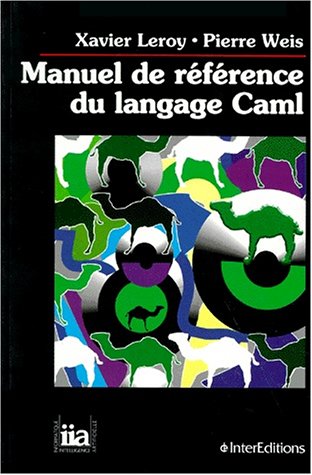 |
Teaching programming with Caml
| [8] | Sylvain Conchon and Jean-Christophe Filliâtre.
Apprendre à programmer avec OCaml.
Algorithmes et structures de données. Éditions Eyrolles, Sept 2014.
ISBN 978-2-212-13678-4
.
L'apprentissage de la programmation est difficile. Bien programmer nécessite des connaissances algorithmiques, de l'imagination, de l'anticipation, la maîtrise d'un langage de programmation, et surtout beaucoup d'expérience car les difficultés se cachent souvent dans les détails. Cet ouvrage synthétise nos expériences à la fois de programmeurs et d'enseignants en programmation.
N'oubliez pas que le style de programmation est essentiel. Dans un langage donné, le même algorithme peut être écrit de multiples façons, et certaines peuvent être à la fois élégantes et efficaces. C'est cela que le programmeur doit rechercher à tout prix. C'est la raison pour laquelle nous avons choisi d'utiliser un langage de programmation particulier plutôt que du pseudo-code. Notre choix s'est ainsi porté sur le langage OCaml.
Cet ouvrage est découpé en trois parties. La première est une initiation au langage OCaml destinée aux débutants. Il peut s'agir autant de débutants en programmation, que de programmeurs plus expérimentés qui ne connaissent pas OCaml. À travers de petits programmes, le lecteur découvre les concepts fondamentaux de la programmation et du langage OCaml. Les deuxième et troisième parties sont dédiées à la présentation de concepts algorithmiques fondamentaux pour permettre au lecteur d'écrire ses propres programmes, de manière efficace et structurée. Les concepts algorithmiques sont présentés directement dans la syntaxe du langage OCaml et tous les programmes de cet ouvrage peuvent être immédiatement réutilisés.
|  |
| [9] | Pierre Weis and Xavier Leroy.
Le langage Caml. Second edition:
Dunod, Paris, 1999, ISBN
2-10-004383-8.
First edition:
InterEditions, Paris, 1993.
Out of print
.
This book is a comprehensive introduction to programming in Caml.
Usable as a programming course, it introduces progressively
the language features and shows them at work on the fundamental
programming problems. In addition to many introductory code
samples, this book details the design and implementation of
six complete, realistic programs in reputedly difficult
application areas: compilation, type inference, automata, etc.
|  |
| [10] | Guy Cousineau and Michel Mauny.
Approche fonctionnelle de la programmation. Ediscience (Collection Informatique), Paris, 1995, ISBN
2-84074-114-8. [ Book's web page ]
This book uses Caml as a tool to introduce several important
programming concepts. It is divided in three parts. The
first part is an introduction to Caml, which presents the
language itself, but also introduces evaluation by rewriting,
evaluation strategies and proofs of programs by induction. The
second part is dedicated to the description of application
programs which belong to various fields and might interest
various types of readers or students. Finally, the third
part is dedicated to implementation. It describes
interpretation then compilation, with brief descriptions of
memory management and type synthesis.
|  |
| [19] | Philippe Narbel.
Programmation fonctionnelle, générique et objet: une introduction avec le langage OCaml. Vuibert, Paris 2005, ISBN 2-7117-4843-X. | 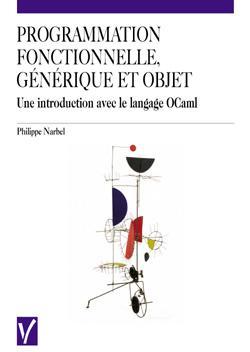 |
| [20] | Pascal Manoury.
Programmation de droite à gauche et vice-versa. Éditions Paracamplus, Paris, 2011, ISBN 978-2-916466-05-7. |  |
Books in Chinese
| [21] | Gang Chen.
OCaml语言编程基础教程 (an introduction to OCaml language programming). 人民邮电出版社 (Posts & Telecom Press), 2018, ISBN 9787115471215. |  |
Books in German
Books in Italian
| [23] | Carla Limongelli and Marta Cialdea.
Introduzione alla programmazione funzionale. Societa' Editrice Esculapio, 2002, ISBN 88-7488-031-6. |  |


